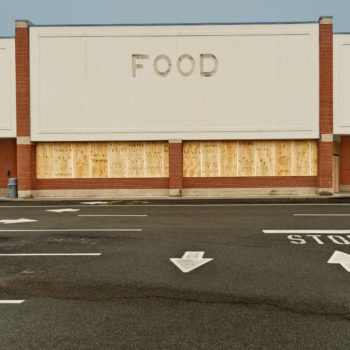Personalisation & Loyalty: The High Street Fights Back
by Lindsay Rowntree on 21st Dec 2017 in News

The death of physical shops, and indeed the high street, has long been predicted ever since online shopping began to grow in earnest. And the figures around online spending certainly back that up: last year in the UK, we spent £133bn online, according to Capgemini. This represented a 16% increase from 2015, certainly pointing towards an ongoing trend. But does it actually give an accurate view of the retail space? Writing exclusively for RetailTechNews, David Buckingham, CEO, Ecrebo, explains why sounding the death knell of the high street could be slightly premature, but it's up to the retailers to keep it alive.
Looking at internet shopping in the context of all retail sales, this £133bn only accounts for a relatively small proportion of sales – 15.6% in fact. Globally, it’s even lower and online spending represented just 8.7% of global retail sales in 2016. In the UK, this means that the remaining 84% of retail sales took place in-store.
Of course that is all set to change, with growing demand from consumers and advances in technology – such as a new platform that connects brands and consumers directly, bypassing the retailer – and adding another competitive angle.
So, does this all add up to signal the death of the supermarket? Death of the high street? In short, the answer is no. Retailers have a number of tools at their disposal to give them a competitive edge. First and foremost, the in-store experience, as well as the instant gratification factor and loyalty, specifically personalisation.
Taking a step back, customers need a reason to go in-store. And, very often, discounts or sales are not enough to drive customers in, particularly into supermarkets. Rather, all-year value and loyalty rewards based on past purchases or recommendations are the key to success.
Once customers are in-store, retailers have another tool to use – the point of sale. This represents another channel that they can use to engage with customers, except this one benefits from the use of real-time data to deliver personalised rewards. Returning customers are identified at the tills based on loyalty cards or apps; and during the transaction, real-time data is gathered, processed, and analysed. In mere seconds, the customer is presented with a personalised reward or offer, based on what they just bought, past purchases, and recommendations based on similar purchases by other shoppers.
With the right platform, this offer can be delivered right at the till in the form of a coupon, on-receipt message, or email. The data yielded at the point of sale includes valuable insight into the customer, the transaction type (shopping for lunch, an evening shop for bread and milk, or a weekly shop), the frequency of visits, what they’re buying, and how much they are spending.
The instantaneous processing of this information, and delivery of a targeted, relevant offer, is the next step in further personalising the customer journey. This can be taken online too, where the consistency of experience is particularly important here for multi-channel retailers.
Another method that can be used in-store is the digital receipt, adopted by many retailers and growing quickly in popularity. This opens up an important post-sales channel for retailers to engage with customers and can be tailored to their specific needs, including promotional or discount information – all personalised and relevant to that customer.
Despite these tools, it won’t be smooth sailing for brick-and-mortar retailers. Competition will become ever more fierce, and they will have to try that much harder to retain and attract loyal customers. For the grocery sector, this challenge is only exacerbated as shoppers can be apathetic when it comes to loyalty. As a result, retailers have long been striving towards growing loyalty and spend levels. By all accounts, this will only intensify as we go forward. Moreover, it is improving ways that will drive loyalty, such as personalisation, that will play a decisive role.
The in-store customer needs to be incentivised to come back, to spend more, and to choose one retail brand over another – and over an online-only competitor. Again, personalisation is key, giving retailers the opportunity to demonstrate to their customers that they ‘know’ them and can tailor offers to suit their purchasing behaviour and needs – whether this personalisation takes the form of targeted communications (via email, text, or even post) or specific, relevant offers and promotions in-store and at the till. Ultimately, it will be the customer who feels understood and rewarded who will be more likely to shop with the brand, remain loyal, and tip the scales in favour of the in-store experience.This content was originally published in RetailTechNews.








Follow ExchangeWire